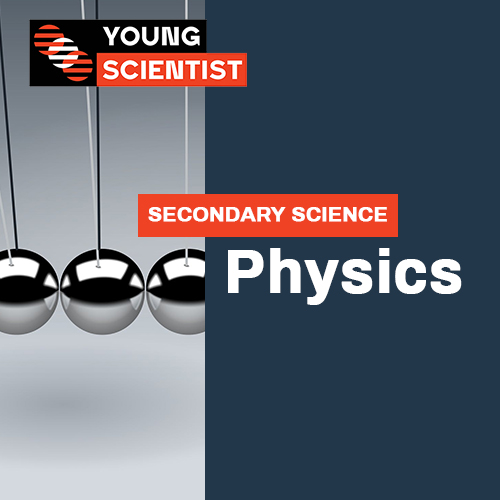Celebrating our 2020 Young Scientist Awardees - Physics

Emerson Jolliffe
Incidence and prevention of Varicella
Chickenpox is a common infectious illness. Emerson’s literature review of qualitative data showed that there was a significant decline in the number of incidences and hospitalisations since a vaccine was introduced in South Australia in 2005.
Jupiter Grant
The Impact Changing the Number of Blades on a Pelton Turbine has on Rotations Per Minute
Hydroelectricity is a sustainable energy source with the potential to take over an increasing proportion of the electricity generated from fossil fuels. Jupiter set out to explore the use of the Pelton turbine, which is often used in smaller private dams. He used 3D printing to create the blades and tested the effect of the number of blades on the spin velocity, finding that it resulted in a faster rotation, but with each additional blade having a smaller effect.
Zoe Hayes
Determining if Water Cooling solar panels enhances the performance
Solar panels are part of the global strategy to reduce the use of fossil fuels and transition to a more sustainable way of generating electricity. Zoe investigated the impact of using water to cool solar panels. Her results showed that having a container with more water on top of the car powered by the solar panel resulted in a greater distance travelled. This indicated that reducing overheating was an important way of increasing the output for solar power
Ella Fleming
An Investigation into the effect of dust buildup of the power output of solar cells
Solar panels have great potential in rural areas across the globe, as they offer the possibility of electricity production without access to the grid. However, it is critical that the panels are maintained to ensure their continued efficiency. Ella studied the effect of different amounts of sand on the power output of a solar panel, and found that the performance was degraded. She emphasised how important it is that users of solar panels are educated about this issue.
Matthew Cooper
Investigating the impact of temperature on solar cells
With renewable energy being so important to our sustainable use of the planet, this study explored factors that may impact the efficiency of solar panels. Matthew combined an extensive review of secondary data from the Bureau of Meteorology with his own testing to analyse relationships between temperature and efficiency of solar panels. Matthew’s research was thorough, his analysis of his first-hand data and error analysis was outstanding and his findings significant for our understanding of this renewable energy resource.
Conrad Petrovic
Investigating the relationship between carburising time and case depth in steel case hardened by pack carburising, gas carbonitriding and cyaniding techniques
Conrad’s project may seem abstract but maintaining steel quality and how it can be improved is vitally important for so many industries. Conrad undertook extensive research into the processes used to harden steel and then conducted his own first-hand research into how one of these processes impacted the final quality of the steel. His analysis of complex data and ability to synthesis this into a meaningful conclusion was well worth reading.
Jasmine Webb
Determining the Distance of Open Star Cluster NGC 4755 from Earth Using Photometric Analysis
Using images from the ‘Our Solar Siblings’ project, Jasmine constructed colour magnitude diagrams to determine the distance of the famous ‘Jewel Box’ cluster in the Southern Cross constellation. She found the distance to be consistent with the lower end of the published range.
Alexandra Prokhorov
The Perfect Shot Put: The Optimal Conditions for A Throw
Shot put is a field event that requires a great deal of skill and precision for success. Alexandra wanted to determine the best angle, environmental temperature and the best muscle warm-up routine for a strong performance. Through use of video tracking to measure the trajectory, she showed that an angle of 37° and an air temperature of 20°C were the best combination, with five pushups immediately beforehand to get the arm muscles ready.
Anviti Sinha
Which type of water has the highest conductivity?
Water purity is an important issue, both to determine the safety of the water, but also for aesthetics, both positive and negative. Anviti explored the relationship between the electrical conductivity and the concentration of salts in the water. Her measurements showed that, while seawater had the highest conductivity and distilled water the lowest, the sparkling waters had fairly high conductivities, whether or not they were listed as ‘mineral water’.
Emily Burns
In or Out; Heat or Fan- Drying a Towel Needs a Plan
No-one wants to use damp towels! Emily decided to extend a previous investigation on evaporation to a common real-world problem by looking at the effects of using an exhaust fan, a heat lamp and the humidity of the room on the rate of drying. She found that increased air movement is the most critical factor in drying towels quickly.
Alex Gray
A General Vector Theory of the Dynamics of a Rapidly Rotating Top
Even the simplest of toys can have astonishing physics behind them. Alex explored the physics of the spinning top. He researched all the different elements that contribute to the top’s motion and used this to build a computer simulation. Predictions were made based on the simulation data which were tested in his investigation that used a unique contraption that sought to limit the variables involved with getting the top to spin. A fascinating project.
Hamish Magill
How Do Different Surfaces Affect the Braking Distance of A Vehicle?
Realising that car crashes are a significant issue, Hamish carried out an investigation to determine the effect of different surfaces on stopping distance. In his experiment, he compared asphalt, carpet, grass, tiles and wood, finding that a toy car travelled furthest on wood, and stopped most quickly on grass, with variables including the initial kinetic energy kept constant.